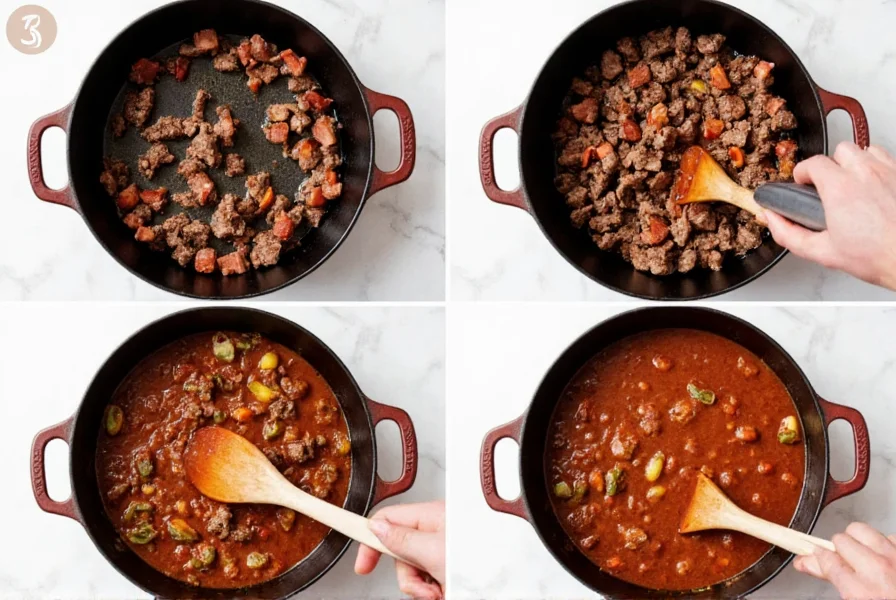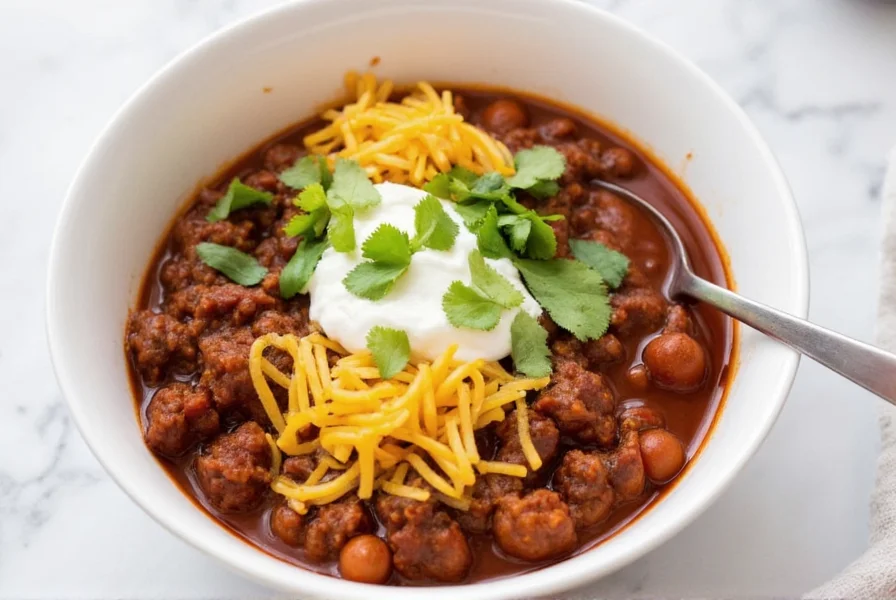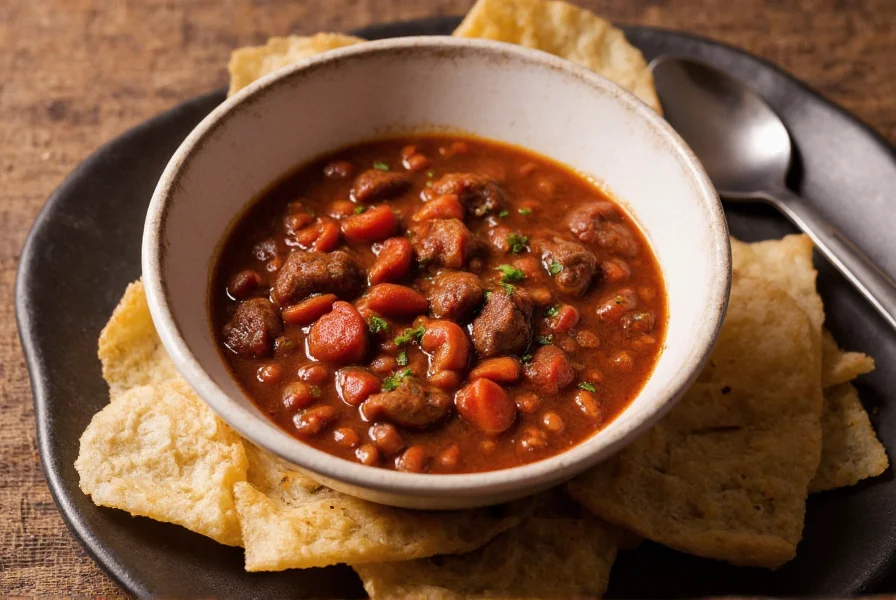Creating exceptional chili made with venison requires understanding this unique game meat's characteristics. Unlike beef, venison is extremely lean—often containing 50% less fat—which means it needs special attention during preparation to prevent dryness while maximizing its distinctive, slightly sweet flavor profile. This comprehensive guide provides everything you need to transform wild game into a crowd-pleasing chili that even non-hunters will love.
Why Venison Excels in Chili Recipes
Venison's rich, earthy flavor stands up beautifully to the bold spices and tomatoes in chili. The meat's natural leanness makes it a healthier protein option while still delivering that satisfying meaty depth chili demands. When properly prepared, venison chili offers a more complex flavor profile than standard beef versions, with subtle notes that reflect the animal's natural diet and habitat.
Hunters particularly value venison chili as an ideal way to showcase their harvest. The strong spices and cooking process help mellow any potential 'gamey' notes that might concern novice game meat eaters, making it perfect for introducing others to wild game cuisine.
Key Differences: Venison vs. Beef Chili
Understanding these critical distinctions will transform your venison chili results:
| Characteristic | Venison Chili | Beef Chili |
|---|---|---|
| Fat Content | 3-5% (very lean) | 15-30% (higher fat) |
| Cooking Liquid | Requires 25% more liquid | Standard liquid amounts |
| Cooking Time | 45-60 minutes (overcooks easily) | 60-90 minutes (benefits from longer) |
| Flavor Profile | Earthy, slightly sweet, game-forward | Rich, beefy, familiar |
| Fat Addition | Necessary (bacon, olive oil) | Optional |
Essential Ingredients for Perfect Venison Chili
The foundation of an outstanding venison chili recipe starts with these components:
- Ground venison (2-3 lbs) - fresh or properly thawed frozen
- Bacon (4-6 slices) - provides necessary fat and smoky flavor
- Fire-roasted diced tomatoes (28 oz can) - adds depth and acidity
- Onion and garlic - foundational aromatics
- Chili powder blend - look for one with ancho and chipotle peppers
- Beef or vegetable broth - 25% more than beef chili recipes
- Optional beans - kidney or pinto (1-2 cans, drained)
For those seeking a spicy venison chili recipe, consider adding one diced jalapeño or a pinch of cayenne pepper. If you prefer venison chili without beans, simply omit them and increase the meat by ½ pound for heartier texture.
Step-by-Step Venison Chili Preparation
Follow these instructions for foolproof venison chili every time:
- Cook 4-6 slices of bacon in a large Dutch oven until crisp. Remove bacon, leaving 2 tablespoons of fat.
- Brown 2-3 pounds of ground venison in the bacon fat over medium-high heat, breaking into small crumbles.
- Add 1 large diced onion and 4 minced garlic cloves, cooking until softened (5-7 minutes).
- Stir in 3 tablespoons chili powder, 1 tablespoon cumin, 2 teaspoons smoked paprika, and 1 teaspoon oregano.
- Add one 28-ounce can fire-roasted diced tomatoes (with juices), 2 cups broth, and optional beans.
- Return cooked bacon to the pot, breaking into pieces.
- Simmer uncovered for 45-60 minutes, stirring occasionally, until thickened to desired consistency.
Proven Venison Chili Cooking Tips
Master these techniques for consistently excellent results:
- Don't skip the fat addition - Venison's leanness requires supplemental fat. Bacon is ideal, but olive oil or a small amount of ground pork works too.
- Avoid overcooking - Venison becomes dry and crumbly beyond 60 minutes of simmering. Set a timer!
- Bloom your spices - Cook spices with the meat and aromatics for 1-2 minutes before adding liquids to intensify flavors.
- Acid balance is crucial - If your chili tastes flat, add 1 tablespoon of cider vinegar or lime juice at the end.
- Rest before serving - Let chili sit off heat for 15 minutes; flavors meld and texture improves.

Variations and Serving Suggestions
Customize your venison chili recipe to match your preferences:
- Slow cooker venison chili - After browning, transfer everything to a slow cooker and cook on low for 4-6 hours
- Texas-style - Omit beans and tomatoes for a meat-forward chili with just meat, spices, and broth
- White bean venison chili - Substitute white beans and green chilies for a lighter variation
- Cincinnati-style - Top with spaghetti and a sprinkle of cinnamon for this regional favorite
Serve your venison chili with traditional toppings: shredded cheddar, sour cream, diced red onion, and fresh cilantro. For a complete meal, pair with cornbread or saltine crackers. Venison chili also makes an excellent topping for hot dogs or baked potatoes.
Storage and Reheating Instructions
Venison chili's flavors deepen when stored properly:
- Cool completely before storing in airtight containers
- Refrigerate for up to 4 days or freeze for 3-4 months
- Reheat gently on stove with a splash of broth to restore moisture
- Freeze in portion-sized containers for quick meals
Many hunters report that properly stored venison chili actually improves in flavor after 24-48 hours as the spices fully integrate with the lean meat.

Frequently Asked Questions
How do you prevent venison chili from becoming dry?
To prevent dryness in venison chili, incorporate sufficient fat sources like bacon or olive oil (about 2 tablespoons per pound of meat), use 25% more liquid than beef chili recipes, and avoid overcooking beyond 60 minutes. The lean nature of deer meat requires these adjustments to maintain moisture during the cooking process.
Can you make venison chili without beans?
Yes, you can absolutely make venison chili without beans. Traditional Texas-style chili omits beans entirely, focusing on the meat and spice profile. If making venison chili without beans, increase the meat by ½ pound and consider adding ½ cup of masa harina to thicken the chili and enhance texture. Many hunters prefer bean-free versions to showcase the pure venison flavor.
What's the best way to thaw frozen venison for chili?
The safest method to thaw venison for chili is in the refrigerator for 24-48 hours. For quicker thawing, place vacuum-sealed meat in cold water, changing the water every 30 minutes until thawed. Never thaw venison at room temperature, as this promotes bacterial growth in the temperature danger zone. Properly thawed venison should be used within 1-2 days for best results in your chili recipe.
How spicy should venison chili be?
Venison chili's spiciness is personal preference, but most recipes benefit from medium heat (6,000-8,000 Scoville units) to complement without overwhelming the meat's flavor. Start with 2-3 tablespoons of standard chili powder blend, then adjust with cayenne or fresh chilies to taste. Remember that spice levels intensify as chili simmers and rests, so it's better to under-spice initially and adjust before serving.











 浙公网安备
33010002000092号
浙公网安备
33010002000092号 浙B2-20120091-4
浙B2-20120091-4